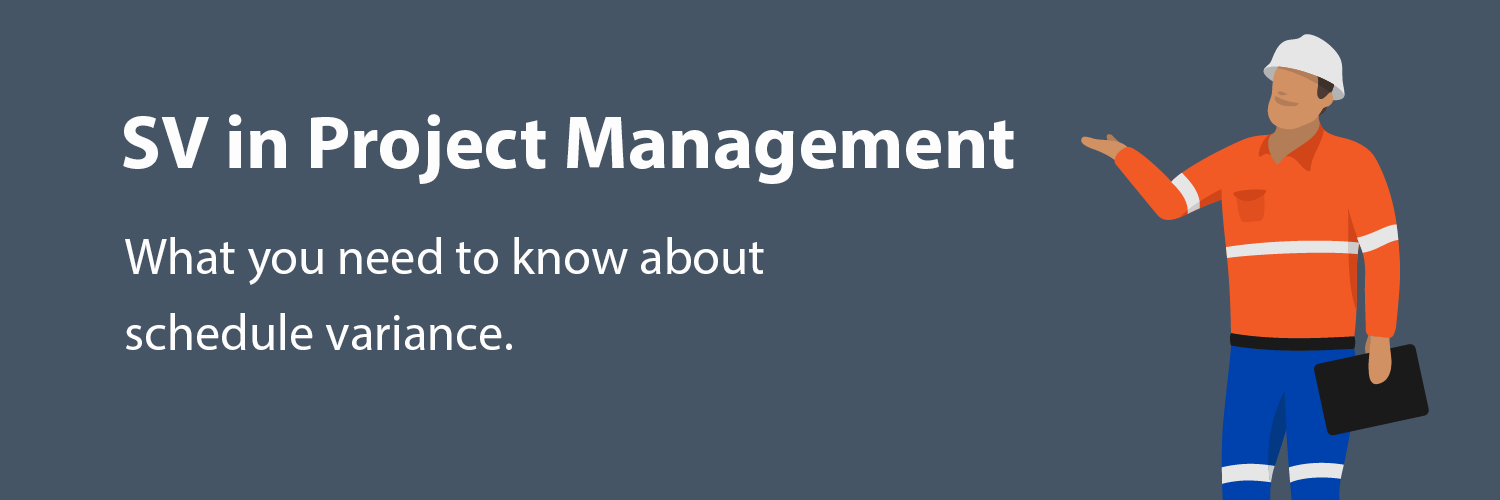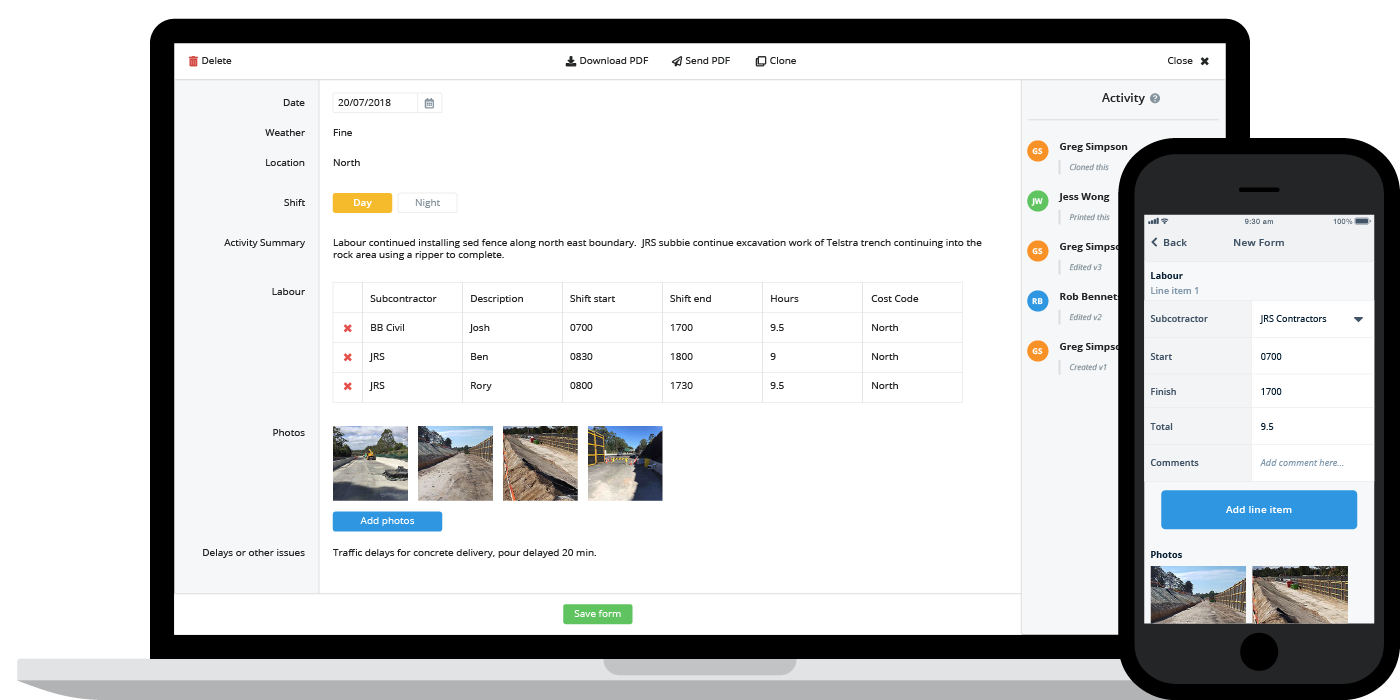Finance – SV project management

SV Project management: Schedule variance definition, formula and more
SV project management definition
Schedule variance (SV) is an objective and quantifiable measure which enables project managers, teams and companies to understand whether a project is on, behind or ahead of schedule.
Schedule variance is one of the two major variance measurements used as part of the broader earned value management discussion - alongside cost variance.
Schedule variance and cost variance combine to give a project manager insights into the two major components of project performance: cost and time (schedule).
SV project management formula
One of the most powerful elements of schedule variance is that it is a quantifiable project metric which has a clear and easy-to-understand formula.
The SV formula involves two of the EVM metrics:
- Earned value - Earned value is the value of work which has been completed to date.
- Planned value - Planned value is the approved value or cost of the work which was schedule to be completed in a specific period of time.
In the SV formula, planned value is subtracted from earned value to give us our schedule variance.

You can see from the above that the SV formula, and the resulting schedule variance, is taking the work we have completed to date and subtracting the amount of work which was schedule to be completed by this date.
This gives us a number which tells us whether we are ahead or behind schedule. If the SV formula gives us a negative number, then our planned value was greater than our current earned value and hence we are behind schedule.
If our schedule variance is positive, then we have created more value than planned at this stage of the project, and hence we are ahead of schedule.
Calculating schedule variance...
The most helpful way to look at SV in project management is to look at an example of what a schedule variance calculation looks like.
For this example, let's assume that the total budget for a project (or budget at completion) is $100,000.
Let's also assume that this project is schedule to be completed in exactly 12 months.
We are a project manager looking to calculate our SV for this project when we are 6 months through the project. At the 6 month mark, we have completed 55% of the planned works.
To calculate our current earned value, we take the % of the project we have completed and multiply that by the BAC:
Earned value = % of work completed x BAC = 55% x $100,000 = $55,000
So our current earned value is $55,000.
Now that we have this key number, we can find our schedule variance.
We simply take our earned value of $55,000 and place this in the SV formula with our planned value at this stage of the project. Because we planned to be 50% of the way through the project and through our $100,000 budget, we have a planned value of $50,000.
Putting this elements together, we now know our schedule variance:
SV = EV - PV = $55,000 - $50,000 = $5,000
Our schedule variance is $5,000. Because our SV is positive, we know that we are $5,000 ahead of schedule at the 6 month mark.
As we know from all of our project management metrics and KPI's, no single metric tells the full story. We will also need to work out are cost variance, and use these numbers to create new and more accurate estimates and projections.
Other tools to keep your projects and SV on track
Earned value is one of the easiest and most useful project management techniques. It provides us with the information we need - during the course of a project - to make informed decisions and course corrections to keep our projects on time and on budget.
But actually keeping projects on track, even with SV project management formulas and techniques is not easy.
Firstly, we need to ensure that the data and information behind our SV formulas and calculations is accurate, and we also need to have the tools and processes in place to implement change where it is required.
The first component of this comes down to how data is handled on your projects. The real power of SV in project management lies in the speed and accuracy of the data. Understanding schedule variance is only useful when the numbers we use to evaluate SV are real-time numbers and accurate.
This can be quite easily achieved by collecting and moving data from site to the office in real-time. Today, the best ways to do this are through cloud-based information management systems like Dashpivot.
These tools enable workers and supervisors to capture and share information directly from site, and all of this information is synced to the fingertips of the project manager. This reduces the lag time associated with moving and reconciling traditional documents like paper, word docs and PDFs - and also eliminates the chances of information mismanagement and lost data.

On top of this, companies also need to have the resources and tools in place to actually make change when required. It's really helpful to use SV well and to figure out that we are behind schedule, but what are we actually going to do to get our project on schedule.
If we know we are 1 month behind schedule at the 6 month mark, do we have the efficiencies in place to get that month back, or is it simply a matter of knowing how much of a loss or miss the company is going to have.
There are plenty of ways in which construction and other project-based companies can generate new efficiencies: new technologies, smarter processes, a change in personnel and more.
SV in project management is a powerful project tracking tool, and it is informative and actionable. But make sure you are constantly seeking those 1, 2, 5 and 10% improvements in productivity which naturally bring your schedule variance in line, and result in better projects and better profits.
People in 80+ countries use this software to better document and track schedule variance.
